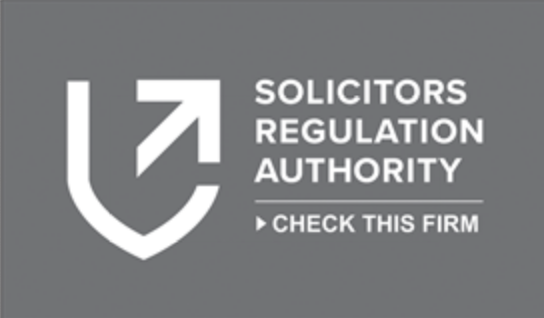
24
Sep 2025
Children Act Pathfinder Pilot – “Charting a new course to child proceedings”
The Pathfinder pilot is a relatively new scheme aiming to improve the court experience and outcomes for children and parents in private family proceedings. The pilot is intended to better safeguard victims of domestic abuse, prioritise child welfare and give more recognition to a child’s wishes and feelings, reduce delays in proceedings and ease pressure on the court system. It was first rolled out in Dorset and North Wales in 2022 and later extended to Birmingham and South-East Wales in 2024 and West Yorkshire in 2025.
The pilot applies to Children Act section 8 applications (for child arrangements orders, prohibited steps orders and specific issue orders), further applications in relation to them for variation or discharge or enforcement of a child arrangement orders.
By prioritising the child’s needs, the pilot aims to resolving cases faster and with fewer hearings, thereby reducing the stress of ongoing litigation, minimising the time children and parents spend in proceedings and reducing the emotional toll of the existing court process.
Existing process:
- The first step in the existing process is to file Form C100. Form C1A should also be filed if the applicant is alleging that they or a child is the victim of domestic abuse.
- It is then a legal requirement to attend a mediation information and assessment meeting (MIAM), unless an exemption applies such as an allegation of domestic abuse.
- The court will allocate a judge and list the case for a First Hearing Dispute Resolution Appointment (FHDRA).
- A CAFCASS safeguarding officer will provide a short safeguarding report prior to the FHDRA, after making safety checks and risk assessments, such as making enquiries of the police and social services and carrying out interviews.
- At the FHDRA, the court will investigate the matter, assist the parties in coming to a settlement and giving directions in cases which must proceed. The FHDRA will be attended by the parents, a CAFCASS officer and potentially a mediator. The judge will determine whether a fact-finding hearing is required for the court to determine any allegations made by the parties and seek to resolve any disagreement to narrow the issues in court.
- If the parents cannot come to an agreement at the FHDRA, the just will list the matter for a Dispute Resolution Appointment (DRA) and will likely direct CAFCASS to produce a section 7 welfare report in advance of this.
- To produce their welfare report, the CAFCASS officer will usually interview the child (usually in a neutral location, such as school) and each parent and assess the living conditions of the child. The report will consider the child’s wishes and feelings, where the child should live, how often the child should spend with the non-resident parent and any other specific concerns. At the end of the report, the CAFCASS officer will make their recommendations.
- Any fact-finding hearing required will then take place, and the CAFCASS officer will produce their welfare report in advance of the DRA.
- The DRA, usually the second hearing, is primarily intended to consider any additional evidence obtained and any reports produced after the FHDRA. The court will then use this opportunity to identify the outstanding issues and the extent to which they can be resolved and consider whether the DRA can be used as a final hearing.
- If no agreement can be made at the DRA, the judge will give final case management directions such as filing further evidence such as statements of fact or witness statements and list a Final Hearing.
- If by the Final Hearing the parties have not come to an agreement which can be endorsed by the judge, the parties will need to give evidence in court and the judge will make the final decision.
Pathfinder process:
- The pathfinder process initially mirrors the existing court process, in that an application must be made by filing form C100 and the parties must first attend a MIAM, unless there is an exemption.
- The pathfinder pilot then takes a different course and rather than immediately being listed for a court appointment, CAFCASS will undertake a Child Impact Report.
- This will take place over a 6-week period involving a more in-depth investigation, comprising safeguard checks, conversations with each parent, police and local authority checks and potential liaison with other professionals involved in the child’s life (eg GP, teachers. Critically, there is a presumption that the child will have the opportunity to be seen and heard during the assessment usually, depending on the child’s age, either by way of a conversation without parents present or by letter. The aim is to find out what’s going on, child’s wants and needs, and any risks to the child. This assessment culminates in a week 7 “gatekeeping” in which a decision will be made as to what needs to happen next regarding court hearings. The report will also make recommendations as to which order they believe will best meet the child’s needs.
- Should it be required, the author of the report will communicate the content of the report either in writing or in person at a hearing which the parties will not attend. The court will then decide whether this communication will be shared with the parties.
- If the author of the report believes there is a risk of domestic abuse, or domestic abuse is raised, it will be suggested that the matter will be referred to a domestic abuse support service.
- Once the report has been received by the court a judge with the appropriate seniority will be appointed who will then consider the next steps in light of:
-
- What is agreed and in dispute;
- Whether there is need for a fact-finding hearing;
- Any current orders being applied for or bars on any orders;
- Whether any other third parties need to be contacted;
- Any interim orders for supervised direct contact or indirect contact;
- Any further directions;
- Whether a decision hearing can be listed; and
- Whether further questions need to be asked of the child to ascertain their wishes and needs.
- The court can then decide at this stage as to how to progress and further directions may include:
-
- Requiring one or both parties to engage in a specific activity that promotes a positive involvement in the child’s life such as a co-parenting course;
- Non-Court Dispute Resolution such as mediation;
- Whether it is appropriate to make a consent order at this time or reviewing an agreement made at this point both with careful consideration as to what is best for the child; and
- Holding a decision hearing.
- The court will tell both parties to keep them informed of what happens next, what either party needs to do and if there is a hearing, where and when it will take place.
- Should the matter be required to go to a final decision hearing, the court will look at what has been agreed, and which issues remain unresolved. Much like a final hearing, a decision hearing will be held which the parties will attend, as potentially will CAFCASS or the local authority. A decision hearing will include questions being asked by either the other party, their legal representation, or the judge about areas of disagreement. Once both parties have had the opportunity to be questioned, the judge will decide.
Effect so far:
Whilst feedback so far has been scarce, it has been overwhelmingly positive.
Court receives more detailed safeguarding and welfare information at an earlier stage.
More CAFCASS involvement.
Fewer hearings!
Reduced harm to victims of abuse (less interaction with court and other parent).
Protects children and gives them more of a voice.
If you are separating and need advice about arrangements for your children contact us 0800 015 0340 or family@chadlaw.co.uk for free, confidential advice.
- Like this ? Share with friends





